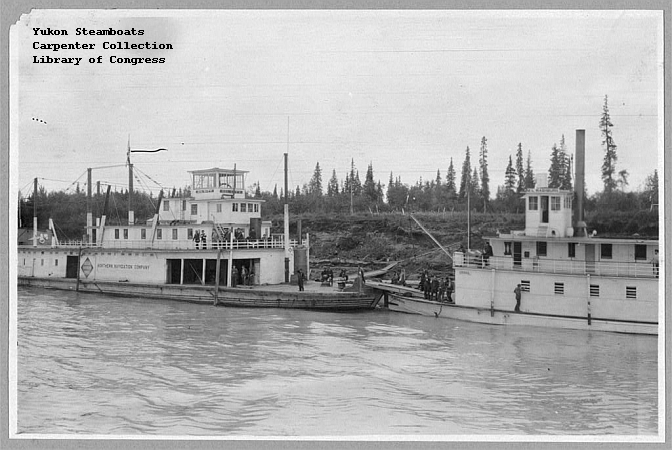
Down the Yukon River but up the Teslin, steamboats like the SS Nisutlin carried the soldiers and equipment of the 340th Engineers to their starting point at Teslin and Morley Bay deep in the interior of Yukon Territory. General Hoge had ordered the 340th to build highway from there through into the mountains of British Columbia. Somewhere east of the Continental Divide they would meet the soldiers of the 35th Engineers coming the other way.
Link to another story “The River Route”

But first they had to get there. From Skagway the White Pass and Yukon Railroad carried them up the mountains to Carcross and on to Whitehorse where men and material could transfer to steamboats on the Yukon. Down the Yukon? No problem. Up the Teslin? Entirely a different matter.
As soon as the Yukon River’s ice broke up on May 22, some 600 soldiers of the 340th lined up by platoon and company in Skagway to board the trains of the WP&YR and invade Yukon. They scattered, of course, the train couldn’t carry them all at once. But around midnight on May 26 the first of them transferred from the train to the SS Nisutlin at Whitehorse and departed for Morley Bay.

The Nisutlin carried them 240 miles, and one of them, Leonard Cox, remembered the trip vividly. He and his fellows spent five days hanging out on the boat, enjoying the ride and the scenery. “The crew,” Cox remembered, “treated us like kings.”
The Nisutlin generated steam with a wood fired boiler; made repeated stops at native run wood camps along the way. Downstream on the Yukon became upstream on the Teslin and the swollen river went head-to-head with the boilers. When the way narrowed, sometimes to as little as 100 feet, the river surged at the boat and the boilers lost the battle. Forward progress came to a halt.
When this happened, the captain would maneuver close to the bank. Men would jump to shore, pull a cable across, and tie it to a tree. An on-board winch would wind in the cable, drag the boat a few feet. The crew on board would drop anchor. Men on shore would move the cable to a tree just a little further along and the winch would wind up a few more feet. The Nisutlin moved upstream a few excruciating feet at a time until the river widened and the current slowed.
The soldier passengers, according to Leonard, had it “pretty soft”. They relaxed, played cards, and enjoyed meals served on tables covered with white tablecloths.
The Teslin River today from You Tube